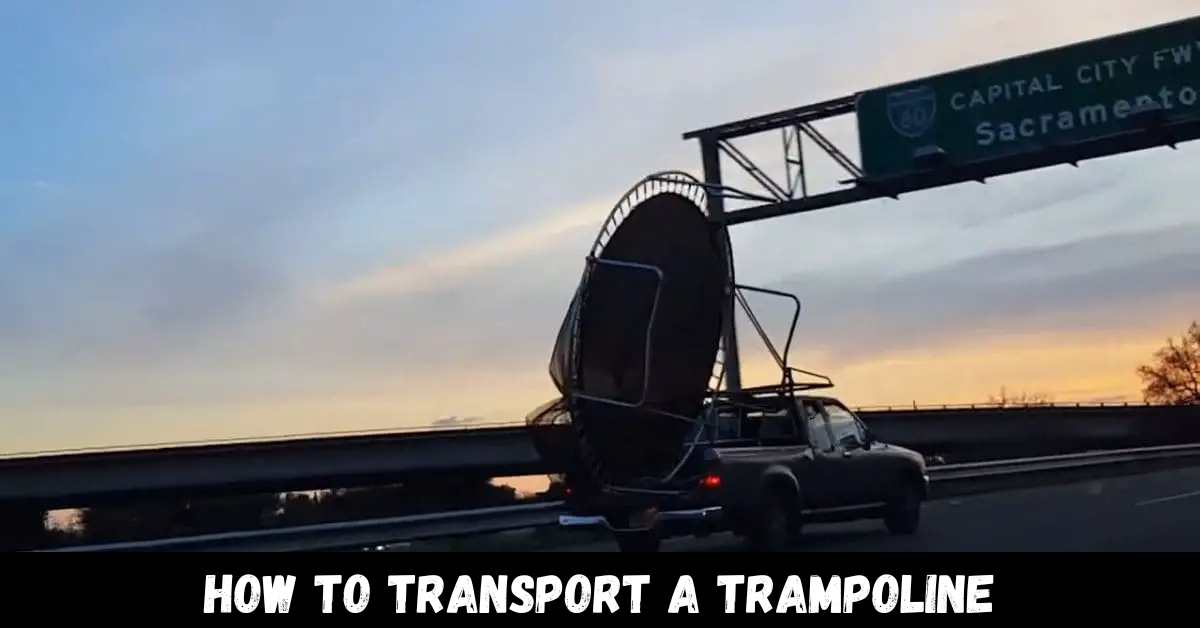Trampolines are a popular outdoor activity that can provide hours of fun for people of all ages. However, transporting a trampoline can be daunting, especially if you need to move it without taking it apart.
Whether you’re relocating to a new home or want to move your trampoline to a different spot in your yard, knowing how to transport it safely and efficiently is essential.
In this guide, we will provide tips and tricks on transporting a trampoline without taking it apart. We will cover the necessary tools and materials needed to make the process easier, as well as the steps you should take to ensure that your trampoline arrives at its new location in good condition.
By following these tips, you can transport your trampoline without any stress or hassle and enjoy all the fun it offers.
How To Transport Trampoline Without Disassembly: Transporting it without taking it apart can seem difficult, but with the right tools and techniques, it can be done safely and efficiently. Follow these tips to ensure your trampoline arrives at its new location in good condition.
How To Transport Trampoline Without Disassembly?
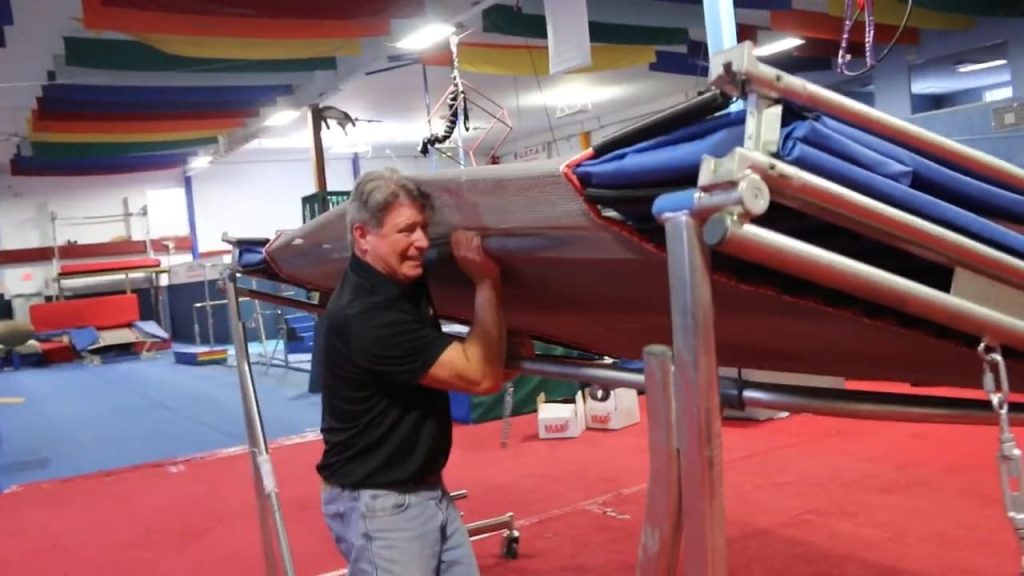
Transporting a trampoline without taking it apart can be daunting, but it’s possible with the right tools and techniques. Here’s a step-by-step guide on how to transport a trampoline without taking it apart:
Necessary tools and materials
When it comes to transporting a trampoline without taking it apart, having the necessary tools and materials is crucial. With the right equipment, you can safely and efficiently move your trampoline to a new location, whether it’s across town or just to a different spot in your yard.
Here are the essential tools and materials you will need to transport your trampoline:
Large tarp
A large tarp is an essential tool for transporting a trampoline without taking it apart. A tarp will help protect the trampoline from damage during transport and prevent any parts from falling off during the move.
Choosing a large tarp to cover the entire trampoline frame and safety netting is important. A heavy-duty tarp is recommended to ensure that it won’t tear or rip during the move.
Bungee cords
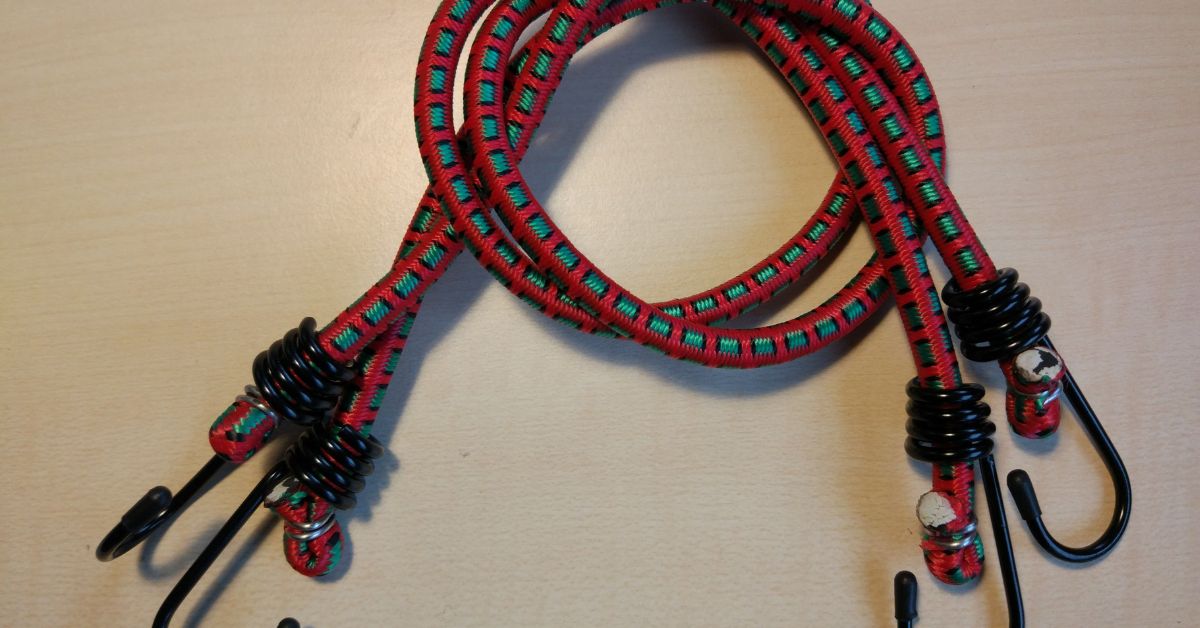
Bungee cords are a versatile tool that can be used to secure the tarp around the trampoline frame and safety netting. They are also useful for securing any loose parts of the trampoline during transport.
Make sure to use high-quality bungee cords that are strong and durable to ensure that the trampoline stays securely in place.
Hand truck or dolly
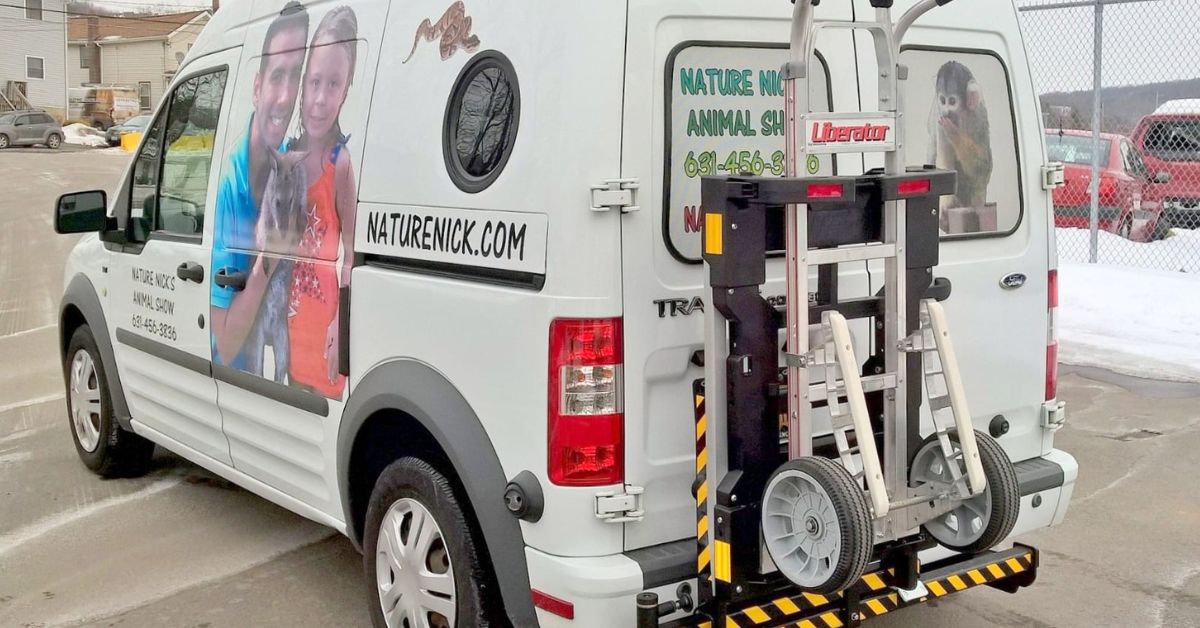
A hand truck or dolly must move the trampoline from one location to another. These tools make lifting and transporting the trampoline easier, especially if you’re moving it over rough or uneven terrain.
Choose a sturdy hand truck or dolly supporting the trampoline’s weight.
Rope or straps
Ropes or straps are useful for transporting the trampoline to a trailer or truck bed. It’s important to choose strong and durable ropes or straps that can handle the trampoline’s weight and prevent it from shifting during the move.
Make sure to tie the rope or straps tightly to ensure that the trampoline stays securely in place.
Preparation
Preparation is key when it comes to safely transporting a trampoline. Here are some important steps to follow before you start moving your trampoline:
Assess the trampoline’s size and weight:
Take accurate measurements of the trampoline and determine its weight. This will help you choose the appropriate vehicle for transporting it and ensure that it will fit safely.
Ensuring you have the necessary tools and equipment:
Before disassembling your trampoline, ensure you have all the necessary tools and equipment. This may include a socket wrench, screwdrivers, pliers, and a ladder. Additionally, if you plan to transport the trampoline in a vehicle, make sure you have straps or bungee cords to secure it.
Securing the trampoline to avoid damage during transport:
Once you’ve disassembled the trampoline, securing all the parts is important to avoid damage during transport. Wrap the metal frame and springs with protective padding, and bundle the legs with zip ties or bungee cords.
Additionally, ensure the trampoline is secured to the vehicle with straps or bungee cords to prevent it from shifting during transport.
By taking these steps, you can ensure safe and successful transport of your trampoline.
Loading the Trampoline
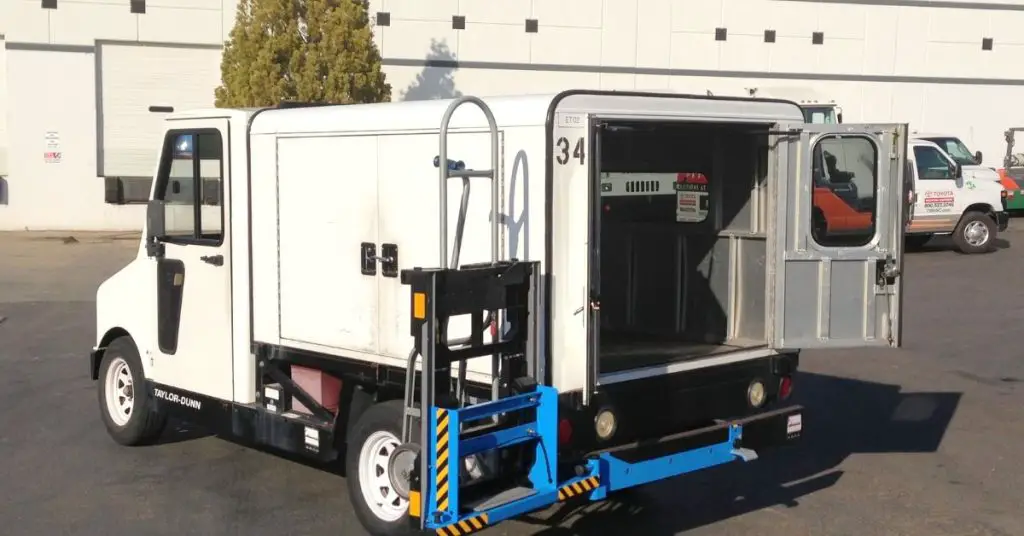
Loading a trampoline onto a transport vehicle requires careful attention to ensure it is safely and securely loaded. Here are some important steps to follow when loading a trampoline onto a vehicle:
Using a vehicle with sufficient space to transport the trampoline:
Make sure you choose a vehicle with enough space to accommodate the trampoline. Consider using a truck or trailer if you’re transporting a large trampoline. It’s also important to ensure the vehicle you choose can safely support the trampoline’s weight.
Properly positioning the trampoline on the vehicle:
Once you have chosen the vehicle to transport the trampoline, you need to position it correctly on the vehicle. Position the trampoline on the vehicle in such a way that it’s balanced and doesn’t tilt. Place the trampoline frame flat on the vehicle bed or trailer, and make sure it’s centered.
If you’re transporting a disassembled trampoline, make sure all the parts are laid out in an organized manner and properly secured.
Securing the trampoline to prevent movement during transport:
After positioning the trampoline on the vehicle, it’s important to secure it to prevent any movement during transport. Use ratchet straps or heavy-duty bungee cords to secure the trampoline to the vehicle.
It’s important to strap the trampoline down tightly so it doesn’t shift during transport. Secure the trampoline at multiple points, including the frame and the legs.
When transporting a trampoline, safety should be your top priority. Here are some additional tips to keep in mind:
Drive slowly and carefully:
When transporting a trampoline, it’s important to drive slowly and carefully. Trampolines are bulky and challenging to maneuver on the road, so take turns slowly and avoid sudden stops.
Check your straps regularly:
Check your straps regularly during transport to ensure they’re still tight and secure. Pull over and adjust the straps before continuing if you notice any looseness.
Cover the trampoline during transport:
Covering the trampoline during transport can help protect it from dirt and debris and prevent any damage from the wind.
By following these tips, you can ensure safe and successful transport of your trampoline. Remember, proper preparation and attention to detail can help prevent damage to your trampoline and ensure it arrives at its destination safely.
Transporting the Trampoline
Transporting a trampoline can be challenging, and taking the necessary precautions to ensure it arrives safely is important. Here are some important steps to follow when transporting a trampoline:
Choosing the safest route to transport the trampoline:
Before transporting your trampoline, carefully plan your route to avoid potential hazards, such as narrow roads or sharp turns. Choose a smooth route that avoids potholes or other obstacles that could damage the trampoline.
Also, be aware of any overhead obstructions, such as low bridges or tree branches, that could damage the trampoline during transport.
Taking necessary precautions while driving:
Driving a vehicle with a trampoline on board requires extra care and attention. To ensure safe transport, reduce speed, and avoid sudden stops or sharp turns.
Ensure to maintain a safe distance from other vehicles on the road, and be extra cautious when driving in adverse weather conditions, such as rain or snow. In addition, be sure to adhere to all traffic laws and regulations.
Monitoring the trampoline throughout the transport process:
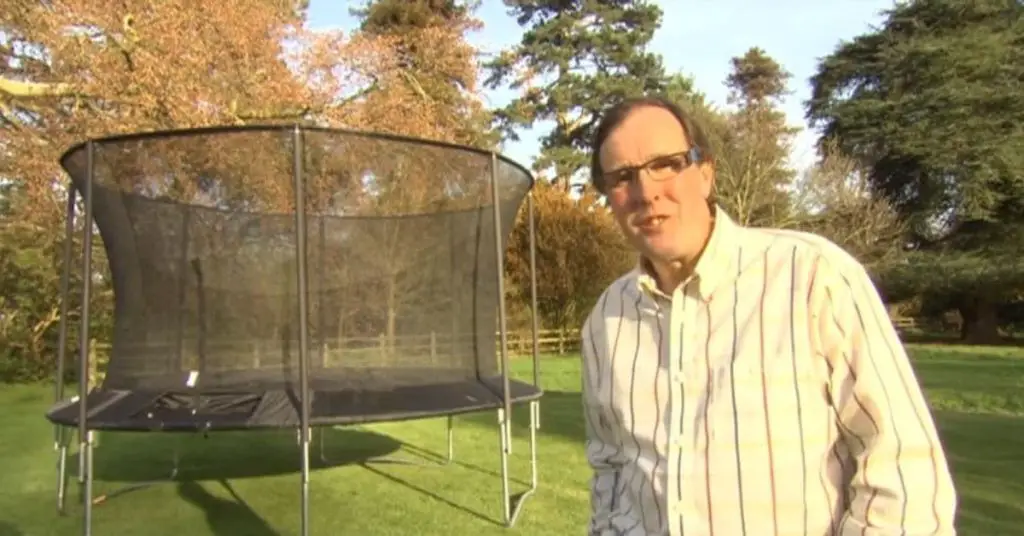
During transport, watching the trampoline is important to ensure it remains secure and undamaged. Pull over and make any necessary adjustments if you notice any signs of damage or shifting during transport.
Using additional safety measures:
If you’re transporting a large trampoline, consider using additional safety measures to ensure safe transport. For example, you can use additional tie-downs or straps to secure the trampoline to the vehicle. You can also use a safety net or cover to protect the trampoline during transport.
By taking these steps, you can help ensure your trampoline’s safe and successful transport. Here are some additional tips to keep in mind:
Check your vehicle’s weight capacity:
Before transporting a trampoline, make sure your vehicle has the weight capacity to safely transport it. Overloading your vehicle can be dangerous and can damage your vehicle’s suspension and brakes.
Use protective padding:
Use protective padding to prevent scratches or other damage to the trampoline during transport. Cover the frame and springs with foam or another soft material to protect them during transport.
Avoid transporting in high winds:

High winds can be dangerous when transporting a trampoline, especially if it’s a large trampoline. Avoid transporting your trampoline in high winds, or secure it with additional straps or tie-downs.
Disassemble the trampoline if necessary:
If you’re transporting a large trampoline, it may be necessary to disassemble it first. This will make transporting easier and reduce the risk of damage during transport.
Hire a professional if needed:
If you’re not comfortable transporting your trampoline yourself, or if you’re transporting a particularly large or valuable trampoline, consider hiring a professional transport company. These companies have the experience and equipment needed to transport your trampoline safely.
Unloading the Trampoline
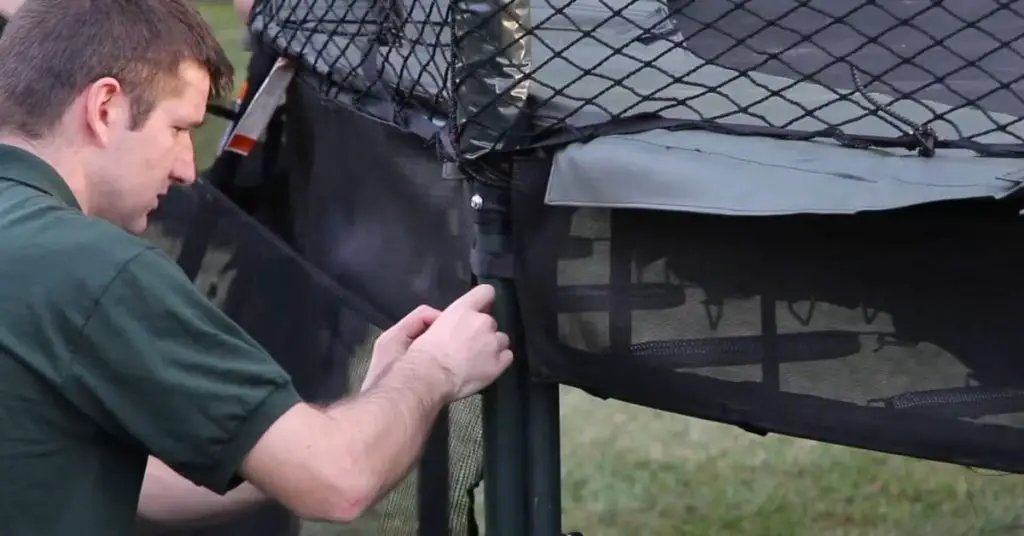
Unloading a trampoline can be as important as loading and transporting it safely. Here are some steps to follow when unloading a trampoline:
Safely unloading the trampoline from the vehicle:
Before unloading the trampoline, park the vehicle on a level surface and engage the parking brake. If your trampoline is secured with straps or tie-downs, carefully remove them before attempting to unload it.
If your trampoline is particularly heavy or large, use a hoist or other equipment to lift it from the vehicle.
Carefully carrying the trampoline to its new location:
Once the trampoline is safely unloaded from the vehicle, carefully carry it to its new location. Make sure to use proper lifting techniques to avoid injury, and avoid dragging the trampoline on the ground or any other rough surfaces that could damage it.
Reassembling the trampoline, if necessary:
If you disassembled the trampoline for transport, you’ll need to reassemble it once it’s in its new location. Follow the manufacturer’s instructions carefully, and use the proper tools and equipment to reassemble the trampoline.
Double-check all connections and ensure the trampoline is level and secure before using it.
Additional tips to keep in mind when unloading a trampoline:
Unloading a trampoline can be a challenging task, but there are some tips you can follow to make it easier and safer. Here are some additional tips to keep in mind when unloading a trampoline:
Use protective padding:
As with loading and transporting the trampoline, it’s important to use protective padding to prevent scratches or other damage during unloading. Place a tarp or protective covering underneath if you need to set the trampoline on the ground or any other rough surface.
Get help if needed:
Unloading a trampoline can be a two-person job, especially if it’s large or heavy. Consider enlisting the help of a friend or family member to help you unload the trampoline safely.
Plan your route carefully:
Before unloading the trampoline, plan your route carefully to avoid any potential hazards, such as uneven terrain or obstacles that could damage the trampoline.
Inspect the trampoline for damage:
Once the trampoline is unloaded and in its new location, inspect it carefully for any signs of damage that may have occurred during transport. If you notice any damage, contact the manufacturer or a professional repair service to address the issue before using the trampoline.
Reassembly at the Destination
Here are the steps for reassembling a trampoline at the destination:
Reassembly Preparations
Before reassembling your trampoline, it’s essential to choose an appropriate location. Opt for a flat and level area, ensuring it is free from obstructions such as rocks, roots, or debris.
Be mindful of overhead clearance, making sure there are no low-hanging branches or other obstacles that could interfere with safe usage.
Lay out all the trampoline components, including the frame, mat, springs, and the safety enclosure if your trampoline has one. During this stage, carefully inspect all parts for any visible damage or ensure there are no missing components.
This inspection is crucial to the safety and proper functioning of the trampoline. Additionally, gather the necessary tools for assembly, which may include a socket wrench, rubber mallet, spring puller, and any manufacturer-specific tools mentioned in the instructions.
Frame Assembly
The first step in reassembling your trampoline is to assemble the frame. Following the manufacturer’s instructions, connect the frame sections, typically using bolts and nuts.
Align the frame sections according to the provided diagrams or guidelines. Using a socket wrench, securely fasten the frame components together to ensure stability.
Once the frame is assembled, it’s crucial to check its stability. Confirm that the frame is level, and use a bubble level to ensure the trampoline frame is flat. A stable frame is the foundation for the safe use of your trampoline.
Mat Installation
After successfully assembling the frame, position the trampoline mat on top of it, making sure the mat is properly centered. It’s essential to ensure that the mat’s eyelets align with the attachment points on the frame.
Attach the springs to the mat and the frame, working in a circular pattern for even tension. Use a spring puller tool to assist with attaching the springs securely.
It is essential to check that all springs are evenly tensioned to prevent any sagging or unevenness in the mat. An evenly tensioned mat contributes to the safety and performance of the trampoline.
Safety Enclosure (if applicable)
If your trampoline comes with a safety enclosure, follow the manufacturer’s instructions to assemble it. Typically, this involves connecting enclosure poles to designated connectors on the trampoline frame.
Ensure that all parts of the safety enclosure are securely attached. Then, attach the netting or mesh around the trampoline frame, ensuring there are no gaps or sagging areas. Proper tension in the enclosure is vital for user safety.
Ladder and Accessories
If your trampoline includes additional accessories like a ladder, basketball hoop, or anchor kit, follow the manufacturer’s instructions for their assembly.
Each accessory should be securely attached and stable, enhancing the trampoline’s functionality and enjoyment.
Final Inspection
Before allowing users on the trampoline, it’s crucial to perform a final inspection. Check for any loose components, such as bolts or nuts, and tighten them as needed.
Ensure that the trampoline is stable on the chosen spot, and there are no wobbling or tilting issues. A comprehensive final inspection is a critical safety measure.
Safety Guidelines
Before users start enjoying the trampoline, take the time to review safety guidelines with them. Emphasize proper usage, weight limits, and the importance of following safety precautions.
If children will be using the trampoline, stress the need for adult supervision to prevent accidents and injuries.
Enjoying the Trampoline
With the trampoline fully reassembled and all safety checks completed, users can now start enjoying it safely. Whether for recreation or exercise, proper assembly and adherence to safety guidelines enhance the trampoline experience.
FAQs About How To Transport Trampoline Without Disassembly
Q.1 Is it possible to transport a trampoline without taking it apart?
Yes, it is possible to transport a trampoline without taking it apart, but it requires some planning and the right tools.
Q.2 What tools do I need to transport a trampoline without taking it apart?
You will need a large tarp, bungee cords, a hand truck or dolly, and possibly some rope or straps to secure the trampoline during transport.
Q.3 Can I transport a trampoline in a regular-sized car?
It depends on the size of your car and the trampoline. If your car has a large enough trunk or backseat area, you may be able to transport a smaller trampoline. For larger trampolines, you may need to use a truck or trailer.
Q.4 How do I secure the trampoline during transport?
Wrap the trampoline frame and safety netting in a tarp and secure it tightly with bungee cords. Use a hand truck or dolly to lift and move the trampoline, and use rope or straps to secure it in place during transport.
Q.5 Can I transport a trampoline alone, or do I need help?
It’s possible to transport a trampoline alone, but it’s always recommended to have at least one other person to help with the lifting and securing of the trampoline.
Conclusion:
In conclusion, transporting a trampoline without taking it apart can be daunting, but with the right tools and safety measures, it is possible to do so successfully.
Preparation is key, so ensure to properly secure the trampoline with bungee cords or rope, cover it with a tarp, and choose the safest route for transport.
Additionally, it is important to regularly check the straps and monitor the trampoline during transport to ensure it stays in place. If you encounter any difficulties, consider disassembling the trampoline or seeking the help of a professional.
Following these guidelines and taking necessary precautions, you can safely transport your trampoline to its new location without any damage or mishaps.
We hope this guide has helped you learn How To Transport Trampoline Without Disassembly. If you have any questions, please feel free to ask them in the comments below!

